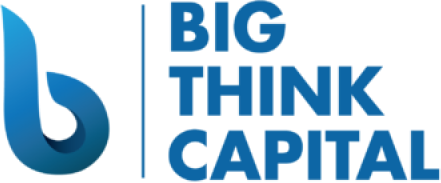Understanding the Impact of Recent Fed Interest Rate Decisions on Small Business Funding Options
Estimated reading time: 5 minutes
- Understand the implications of rising interest rates on funding options.
- Explore current trends in SBA loans, working capital advances, and more.
- Discover strategies for navigating a high interest rate environment.
Table of Contents
- The Federal Reserve and Interest Rates
- Current Interest Rates and Their Implications
- The Role of Inflation in the Current Funding Landscape
- Strategies for Small Business Owners in a Higher Interest Rate Environment
- The Big Think Capital Advantage
- In Conclusion
- FAQ
The Federal Reserve and Interest Rates
The Federal Reserve, often referred to as the Fed, plays a critical role in shaping the U.S. economy, with interest rates being one of its most powerful tools. The Fed adjusts the federal funds rate to manage economic growth, control inflation, and achieve maximum employment. Recent years have seen fluctuations in these rates, influenced by various factors including inflationary pressures and economic recovery post-COVID-19.
As of 2025, the Fed has been responding to persistent inflation rates that have remained above their target levels. This has led to several rate hikes, which directly impact borrowing costs across the financial sector. For small businesses, higher interest rates typically translate to increased costs for loans and lines of credit, making it essential for business owners to understand these changes.
Current Interest Rates and Their Implications
In March 2025, the Federal Reserve raised interest rates to a target range of 5.00% to 5.25%, marking the latest in a series of hikes aimed at curbing inflation. This decision has far-reaching implications for various lending options available to small businesses:
- SBA Loans: While typically offering lower interest rates, rising costs can slightly increase the rates on SBA loans. However, these loans still represent a good value for long-term financing and can be a great option for businesses looking to invest in growth.
- Working Capital Advances: With interest rates on the rise, the cost of capital advances has also increased. Business owners need to carefully assess their cash flow needs and evaluate whether the higher costs justify taking on this financing.
- Equipment Financing: This type of financing allows businesses to acquire necessary equipment without significant upfront costs. However, rising rates can impact the monthly payments and overall cost of these loans.
- Merchant Cash Advances (MCA): While these options provide quick access to funds, they come with higher interest rates and fees that can be exacerbated by increased base rates. Business owners should exercise caution when considering an MCA in a high-rate environment.
- Lines of Credit: Interest rates on lines of credit often mirror changes made by the Fed. As rates increase, borrowing becomes more expensive, prompting small businesses to evaluate their cash flow strategies and funding needs.
The Role of Inflation in the Current Funding Landscape
Inflation has been a persistent issue, peaking at rates exceeding 7% in 2023 and remaining elevated into 2025. This inflationary environment has prompted heightened interest rates from the Fed, creating a restrictive climate for small business financing.
When inflation rates are high:
- Cost of Borrowing Increases: Higher interest rates directly correlate with increased costs for loans and credit lines, making it more difficult for businesses to access affordable financing.
- Consumer Spending Affects Revenue: As prices rise, consumer spending tends to slow, which can affect revenue streams for small businesses. In response, business owners may feel pressured to seek additional financing to maintain cash flow.
- Operational Costs Rise: Supply chain issues and labor market constraints often drive up operational costs. Higher borrowing costs can create tension in managing operational expenses.
Strategies for Small Business Owners in a Higher Interest Rate Environment
Navigating a high interest rate environment requires careful planning and strategic decision-making. Here are three practical takeaways for small business owners looking to secure funding amidst these challenges:
- Evaluate Financing Needs Thoroughly: Before seeking financing, assess your current and projected cash flow needs. Determine whether you require short-term capital for immediate expenses or long-term financing for growth initiatives. This approach enables you to select the most suitable funding options available.
- Consider Alternative Funding Sources: With traditional financing options becoming more expensive, exploring alternative sources of funding can be beneficial. Options like peer-to-peer lending, crowdfunding, and private equity can provide viable alternatives without falling victim to soaring interest rates.
- Focus on Building Strong Relationships with Lenders: Establishing and maintaining relationships with lenders can provide flexibility and better terms in the long run. Even in a high rate environment, having a good rapport can result in favorable treatment when applying for loans.
The Big Think Capital Advantage
At Big Think Capital, we understand the intricacies of the current funding landscape and how Federal Reserve interest rates impact the financing options for small businesses. We offer a variety of products tailored to meet the diverse needs of business owners, from working capital advances and SBA loans to equipment financing and lines of credit.
As you explore your options, our team of funding experts is here to guide you every step of the way. We can help you assess your needs, identify suitable financing options, and navigate the complexities of the current economic climate.
In Conclusion
Understanding the impact of Federal Reserve interest rate decisions is crucial for small business owners in 2025. The ripple effects of these decisions on lending rates and availability can create both challenges and opportunities in securing the funding needed for growth and sustainability. By staying informed and adapting your financing strategies accordingly, you can position your business for success, regardless of the economic climate.
For more insights or to discuss your financing options with our experts, visit us at bigthinkcapital.com or speak with one of our funding specialists today. Together, we can chart a course for your business’s financial success.
FAQ
Q: How do recent Fed interest rate hikes affect small businesses?
A: Recent Fed interest rate hikes lead to increased borrowing costs for small businesses, making it essential for owners to reassess their financing strategies.
Q: What financing options are available for small businesses during high interest rates?
A: Options include SBA loans, equipment financing, merchant cash advances, and alternative funding sources like crowdfunding.
Q: What should small business owners prioritize when seeking funding?
A: Owners should evaluate their financing needs, consider alternative funding solutions, and cultivate strong relationships with lenders.






